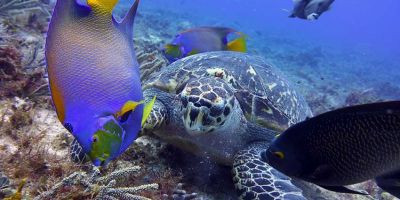The Riviera Maya is an exotic and impressive stretch of the Caribbean coastline that runs South of Cancun; a place with many all-inclusive resorts and plenty of smaller rental properties for those who wish to "self-cater". It pulses with excitement and energy; a place people flock to, to get away from the day-to-day normality of life at home; a place to recharge your soul with what it craves. If this doesn't make you want to add the Riviera Maya to your upcoming 2023 vacation plans, then wait till you see the marine life that awaits you.
It offers something exciting to tempt all tastes; from the awe-inspiring Mayan ruins, the bustling and vibrant city of Playa del Carmen with its pristine white sand beaches stretching for several miles, and then the slightly slower and quieter life of the Akumal area, it is also home to an abundance of natural beauty.
Our favorite part is the secret life that happens beneath the surface, under the calm turquoise water.
As we approach the end of 2022, we cannot find a better way to welcome the new year than by sharing these experiences with our guests, to give them the chance to witness a world so close to ours but so different. This underwater world is rich with beauty and tranquility, we are lucky to get a glimpse of it as visitors. We offer dives in different areas where you'll find many forms of life. It'll be impossible to choose a favorite spot! Use this as inspiration to plan for your 2023 dive trips to the paradisiacal Caribbean coast of Mexico, home of such exotic species.
The underwater life of Akumal
The word “Akumal” comes from Mayan, meaning “Bay of turtles” so If seeing beautiful turtles is what you are keen on, an Akumal Dive will be right up your alley. We are lucky enough to have three different species of these impressive creatures.
Green sea turtle
- The green sea turtle is the friendliest out of the Akumal sea, they are also the ones we see the most. They often make for amazing photography sessions – coming right up to Divers to say hello. They tend to not show much fear of us because we don't interfere with them. As adults they are mostly herbivores, on occasion enjoying a selection of jellyfish.They have a very varied taste palate!

Hawksbill turtle
- The Hawksbill turtle is another year-round resident. They tend to be a little more shy than the Green Sea turtle but will allow us to take photos if we play nicely! And they are also not as abundant as their counterparts. Their diet comprises mainly sponges.

Loggerhead turtle
- The Loggerhead turtle is named for its large head, supporting powerful jaw muscles that allow them to crush hard-shelled prey like their favorite clams and sea urchins. They are the biggest out of the three residents of Akumal, but we can only find them around during the breeding season. The males arrive first and don't hesitate to swim right to the divers, but they're not coming to say hi...they're only coming to make extra sure that you aren't an enticing female of the species because their eyesight is not known for its brilliance!

More species!
Besides these incredible turtle sightings, Akumal also offers an exciting range of species, including some rare sightings if you have patience and a touch of resilience. There’s a variety of marine life that we can see all year round including stingrays, barracudas, nurse sharks, trumpet fish, and lionfish. And if you decide to dive in the cooler months you may even spot pods of dolphins!
Sea horses
- Sea-horses! There are only a handful of times that you may catch a glimpse of these magical creatures (between 10 and 20 times a year on average). If you have been privileged enough to sight them, you would probably have spent a little time browsing patiently amongst the sea grasses and sandy areas. They are tiny in this region, 1-2 inches (2.5-5cm) from top to tail. They are also notoriously difficult to get a good snap of, but if you are in the right place at the right time, you may end up with something incredibly special.
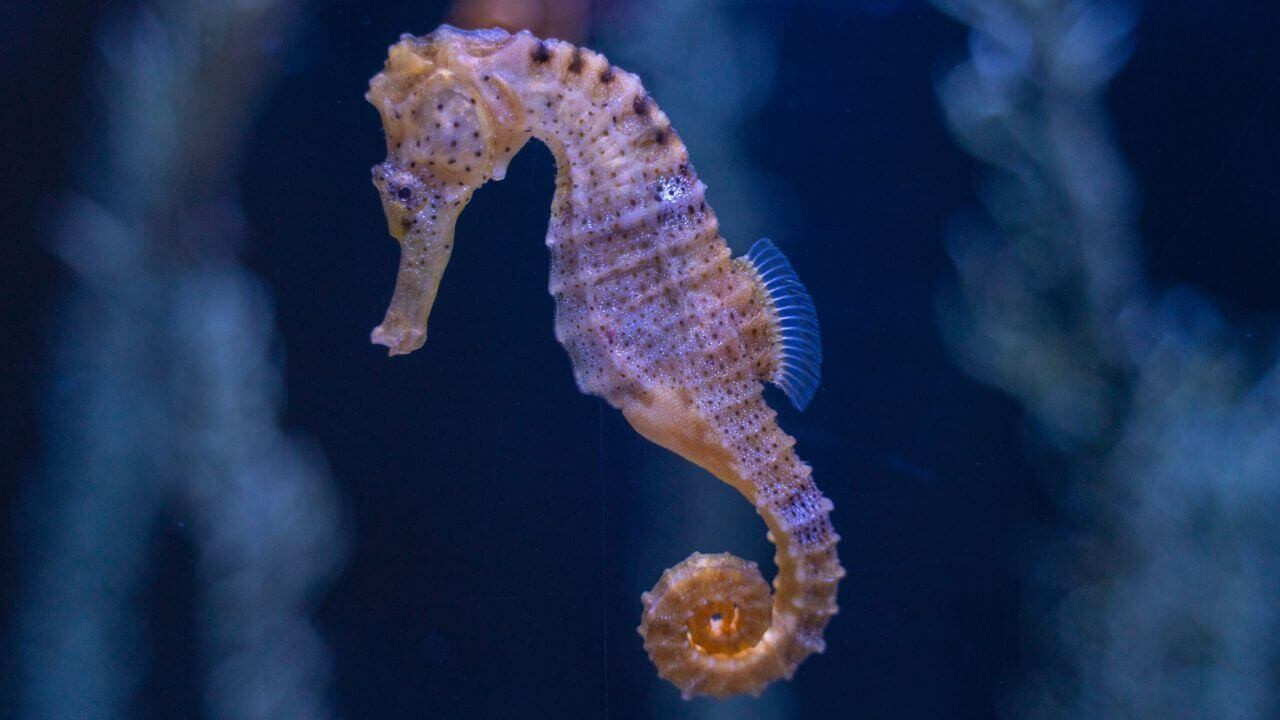
Eagle ray
- The Eagle ray is an infrequent visitor to these shores, but the best time for spotting them is within a tiny window of February to May, you're just in time to book your diving tour and observe these majestic creatures upclose. Once again, if you get a show from one of them, you need to count yourself lucky, as they are rare sightings indeed!

Cruising Cozumel Island
Cozumel is an unspoiled paradise island, perfect for those wanting to relax and absorb the sun. Because it is largely undeveloped, the crystal-clear waters surrounding it are a Diver’s dream. You will see vividly colored sponges, plenty of tropical fish, massively vast coral heads, and little tunnels and caves.

Splendid Toadfish
- The Splendid Toadfish (named Splendid because there is just no other suitable name to describe this creature!), is indigenous to Cozumel Island only and is a truly great fish. Patience is the key to finding them, as they do like to hide away during the daytime.

Nurse shark
- One of the more common finds while on Cozumel is the Nurse shark. They are wonderfully docile creatures, and you could spot three or four of them on your dive. It is unclear as to why they are called Nurse sharks, but one theory is that it comes from the sucking sound they make while hunting for prey in the sands.

C-56 Wreck
Just off the coast of Puerto Morelos lies another spectacular diving attraction. The wreck of a 1943 US Navy minesweeper lies sleeping in the water, creating a habitat for so many species. This ship was purposefully sunk by the Mexican Navy and is a must-see when you are in the area. It is a poignant reminder of how Nature takes over when given the opportunity. You can expect to see Eagle Rays as they are a common sight here, as well as Barracuda which are abundant here. If you are hopeful of seeing a Moray Eel, your chances are good here. This is an opportunity not to be missed.
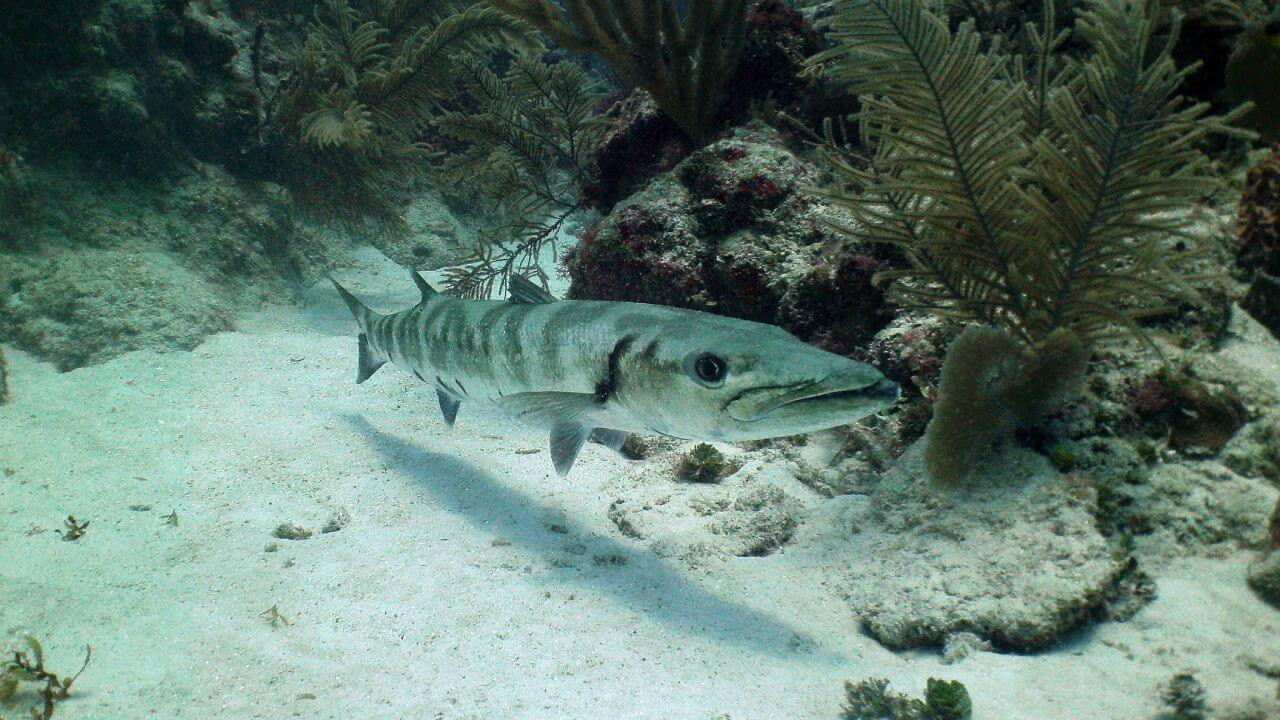
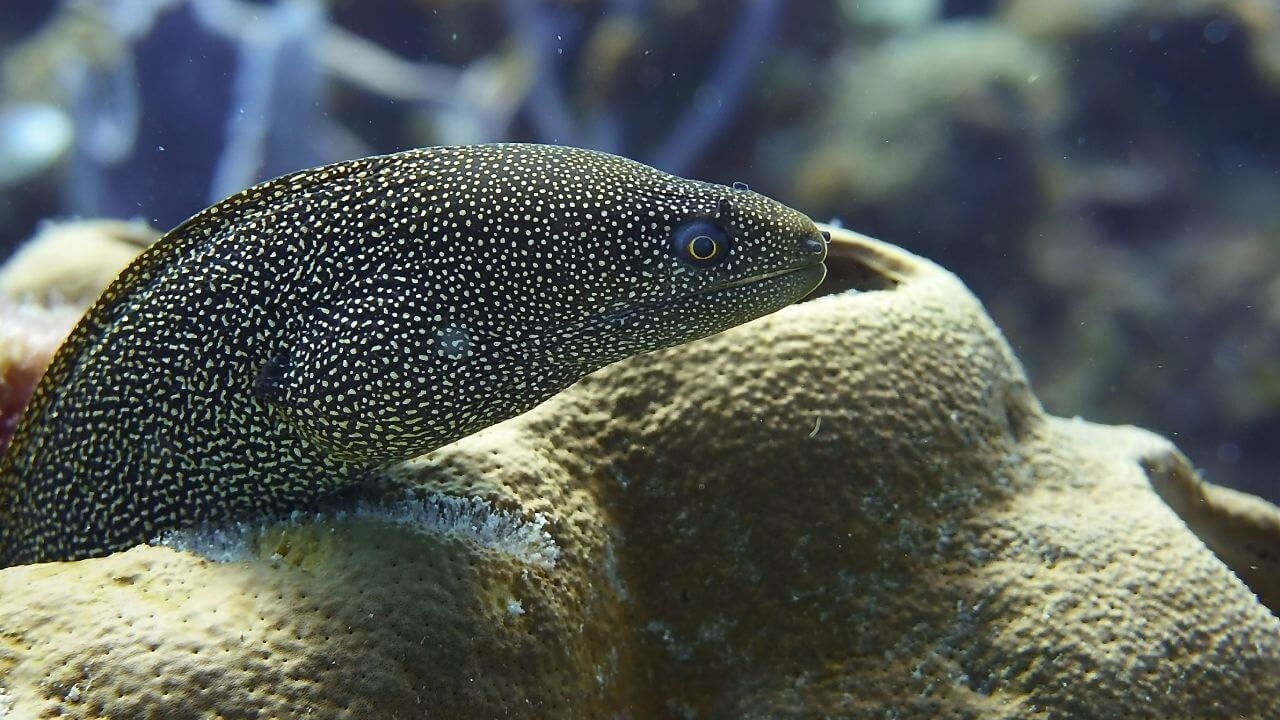
Diving in Playa del Carmen
What do you say about diving with sharks? In late October, the waters of Playa del Carmen become home to the Bull Sharks, a truly impressive ocean shark. The pregnant females can reach a whopping 11ft (3.5m) long. They are a species of shark that can survive equally well in freshwater or saltwater and tend to have a rather aggressive reputation. However, in Playa del Carmen the females seem to be far more docile and, if anything, a little timid at first. But within a couple of minutes, you will be experiencing a "rush" like no other as they come closer and closer to you during your brief visit to their domain.

Holbox Island
Holbox Island is part of Mexico's largest ecological reserve, a bird lover's paradise. But that's not all! For those who prefer the wonders of the ocean world, it has something amazing on offer too. Vast numbers of Whale Sharks congregate annually just off the coast of Holbox, and between May and August, they can be seen feeding on the surface of the Ocean. They are the largest fish in the sea, growing to an unimaginable size of 33ft (11m). This is a once-in-a-lifetime opportunity (unless we convince you to visit us again!) to snorkel very close to them, within 6-10ft (2-3m) of them.

Bonus species
Cenotes are these mystical freshwater cave systems. They are open and accessible for certified divers to have an awe-inspiring experience. The best way to describe them would be as underground rivers, full of crystal-clear water. Through our dives, we've come across different species that inhabit this environment.
Cenote Angelita and Cenote Dreamgate are perfect places to witness life all around. They are surrounded by large amounts of flora and fauna where different species reside, here we'll introduce you to some biodiversity of Mexico's natural paradise.
- The cenotes are mainly surrounded by thick tropical jungles where species of frogs, iguanas, and turtles can be found!

- When you look up at the trees, you can see the signature colorful “bird of the cenote”. The Toh bird is a beautiful-feathered friend that guides us to the freshwater caves of the tropical rainforest

- The Cave swallow is another winged wonder that roams these skies

- There's one animal, in particular, that takes an important part in the conservation and regeneration of the lowland forest. Bats play key roles as pollinators and seed dispersers, the main species you'll find will be insectivorous bats (If you don't bother them, they won't bother you)!
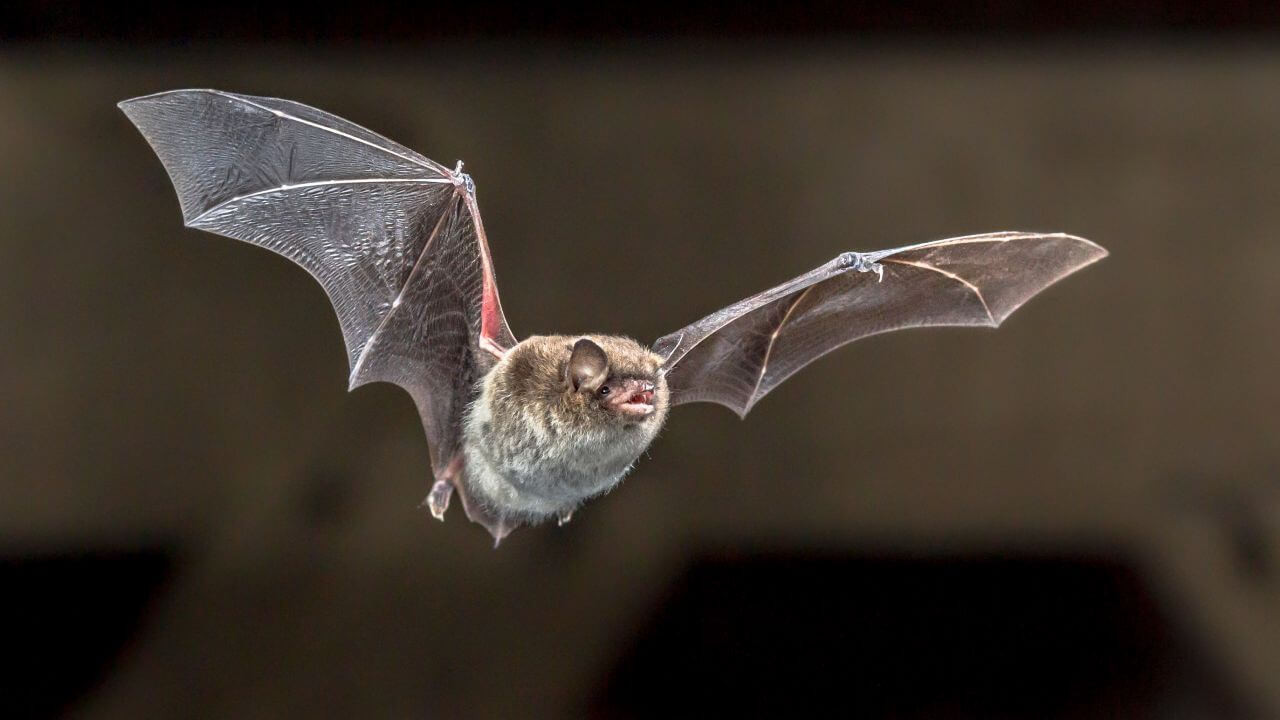
Now that you've seen the spectacular species that can be found outside, what does inhabit these magical waters?
- The blue dancing crab. This invertebrate species can be distinguished from others because of its bright blue color and short tail, which is usually hidden behind its body. This crab has a very territorial behavior, if you dive closely enough it will start to wave from left to right as if they were dancing.

- The Mesoamerican slider is a species of turtle that can be found in the freshwater of the cenotes. They prefer soft and muddy waters with suitable basking spots, they are faithful to their homes.

- It is believed that catfishes first accessed cenotes by underground routes, that's how they came to inhabit these sinkholes.They are a diverse group of ray-finned fish, prominent barbels decorate their face like cat whiskers, giving them their name.
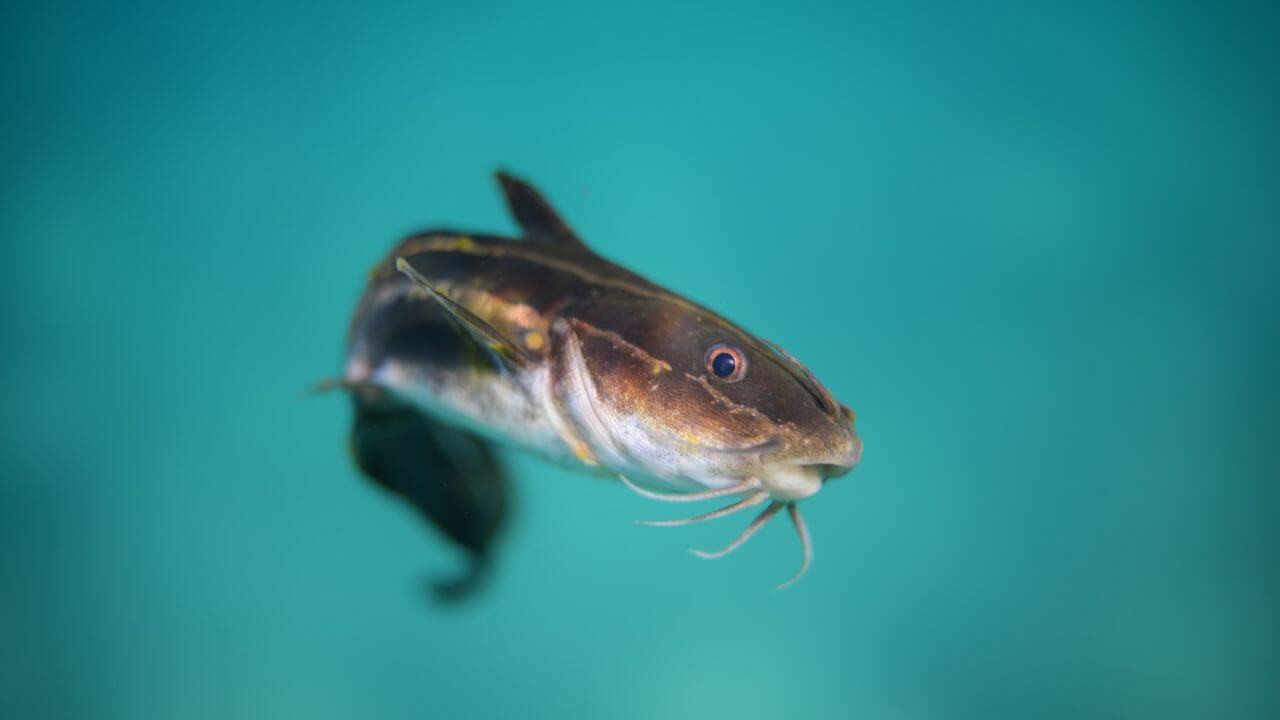
- For the extra thorough observers, the Mexican blind Brotula will be the definite treat, this small, white, eyeless fish is endemic to the cenotes and caves in Mexico, where it’s called “Dama Blanca” (“White Lady”) perhaps because of the ghostly appearance they have.

Choices! Choices!
As you can see, for us to have an absolute favorite is incredibly difficult with so much on offer! But what we can say without a shadow of a doubt is that with each and every dive we do, we experience something new and remarkable. We have yet not had a new encounter, or had a dive that left us bored. We would love to take you on a magical journey of a lifetime with us, and hopefully, we get a chance to share with you (over and over again) the paradise we find ourselves in! The good news is that you're in time to book your diving tours for the upcoming year, you might find yourself swimming next to these creatures in the following months! This an opportunity you can't miss out on, who can resist crossing off "diving in the Caribbean" off of their 2023 bucket list?

